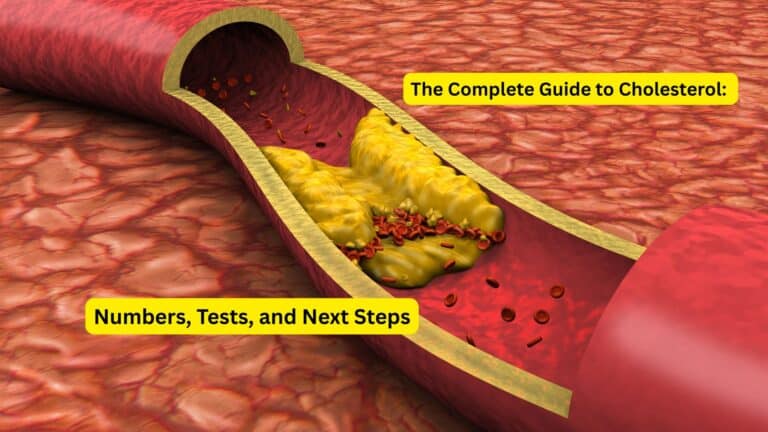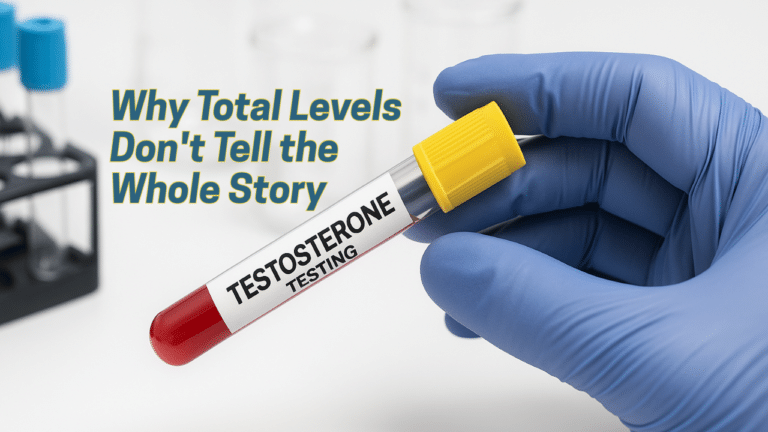Your liver serves as your body’s primary filtration system, processing toxins, metabolizing nutrients, and supporting vital functions around the clock. When alcohol enters this equation, it places significant stress on this essential organ, potentially leading to a cascade of health complications that range from reversible fatty deposits to life-threatening cirrhosis. Understanding the relationship between alcohol consumption and liver health has never been more critical, as recent data reveals alarming trends in alcohol-related liver disease across all demographics.
This comprehensive guide explores the real impact of alcohol on liver function, examines current consumption guidelines, and highlights the importance of early detection through regular testing. By understanding these risks and taking proactive steps toward monitoring liver health, individuals can make informed decisions about their alcohol consumption and take control of their long-term wellness. For those seeking to assess their liver function, Walk-In Lab offers accessible, confidential testing options that can provide crucial insights into liver health status.
How Alcohol Affects the Liver
The liver’s complex relationship with alcohol begins the moment alcohol enters your bloodstream. Unlike other organs, the liver bears the primary responsibility for processing and eliminating alcohol from your body, making it particularly vulnerable to alcohol-related damage. This process involves multiple stages that can progressively compromise liver function and overall health.
Metabolism of Alcohol
When you consume alcohol, your liver immediately begins breaking it down through a two-step enzymatic process. First, the enzyme alcohol dehydrogenase converts alcohol into acetaldehyde, a highly toxic compound that can damage liver cells and interfere with DNA repair mechanisms. Acetaldehyde toxicity directly affects cellular structures and creates oxidative stress throughout the liver tissue.
The second step involves aldehyde dehydrogenase, which converts acetaldehyde into acetate, a less harmful substance that can be eliminated from the body. However, this process can become overwhelmed when alcohol consumption exceeds the liver’s processing capacity, typically one standard drink per hour. When this occurs, acetaldehyde accumulates in liver tissue, causing inflammation and cellular damage that can persist long after alcohol consumption stops.
Stages of Alcohol-Related Liver Disease
Alcohol-related liver disease progresses through distinct stages, each representing increasing levels of damage and decreasing reversibility. The first stage, fatty liver disease, occurs when fat deposits accumulate in liver cells due to altered metabolism. This condition affects up to 90% of heavy drinkers but remains largely asymptomatic and completely reversible with abstinence.
Alcoholic hepatitis represents the second stage, characterized by inflammation and swelling of liver tissue. This condition can range from mild to severe, with acute cases requiring immediate medical intervention. Unlike fatty liver, hepatitis involves inflammatory damage that may not fully reverse even with complete alcohol cessation.
The most severe stage, cirrhosis, involves irreversible scarring of liver tissue that impairs the organ’s ability to function properly. Cirrhotic livers cannot regenerate damaged areas, and the condition often progresses to complete liver failure. In some cases, prolonged alcohol exposure can also lead to liver cancer, particularly hepatocellular carcinoma, which has a poor prognosis and limited treatment options.
Short-Term vs. Long-Term Damage
Short-term alcohol consumption can cause temporary inflammation and altered liver enzyme levels that typically normalize within days to weeks of abstinence. These acute effects include elevated liver enzymes, mild fatty infiltration, and temporary impairment of protein synthesis and detoxification functions.
Long-term damage, however, involves progressive structural changes that may become irreversible. Chronic alcohol exposure leads to fibrosis, where healthy liver tissue is gradually replaced by scar tissue. This scarring process disrupts normal blood flow through the liver and impairs its ability to perform essential functions such as protein production, bile synthesis, and toxin elimination. Once cirrhosis develops, the liver’s regenerative capacity becomes severely compromised, making prevention and early intervention crucial for maintaining liver health.
Trends and Recent Findings
Recent epidemiological data reveals concerning trends in alcohol-related liver disease that highlight the growing impact of alcohol consumption on public health. These findings underscore the urgent need for increased awareness and preventive measures across all demographics.
Alcohol-related liver disease rates have more than doubled over the past two decades, with particularly steep increases among previously lower-risk populations. The demographic profile of those affected has expanded significantly, now encompassing women, adults over 45, individuals living in poverty, and those with metabolic syndrome at unprecedented rates.
Post-pandemic data reveals even more troubling patterns. Mortality rates from alcohol-related liver disease rose nearly 9% annually between 2018 and 2022, representing a marked acceleration from previous years. This dramatic increase coincides with documented surges in alcohol consumption during COVID-19 lockdowns and ongoing pandemic stress.
Women have been disproportionately affected by these trends, with alcohol-linked liver deaths rising particularly among women and young adults. The mortality rate among women increased from 3 to 8 per 100,000 between 2018 and 2022, representing a 4.3% annual increase that outpaces rates seen in men.
These trends reflect broader changes in drinking patterns, including increased accessibility to alcohol, changing social norms around drinking, and the mental health impacts of recent global events. The data suggests that alcohol-related liver disease is becoming a more widespread public health concern that requires comprehensive intervention strategies and increased access to early detection services.
Safe Consumption Guidelines
Current alcohol consumption guidelines reflect evolving understanding of alcohol’s health impacts and emphasize that no amount of alcohol consumption is entirely risk-free. These recommendations serve as general guidance while acknowledging that individual risk factors may warrant even more conservative approaches.
The USDA and Department of Health and Human Services Dietary Guidelines recommend limiting alcohol consumption to no more than two drinks per day for men and one drink per day for women. These guidelines define a standard drink as 12 ounces of beer, 5 ounces of wine, or 1.5 ounces of distilled spirits, each containing approximately 14 grams of pure alcohol.
However, recent research suggests that risks increase notably even within these recommended limits, particularly for liver health. Studies indicate that consuming more than 6-9 drinks per week can significantly elevate the risk of developing alcohol-related liver disease, well below the current daily maximums.
Growing evidence has led some expert panels to advocate for even stricter guidelines. New advisory recommendations call for “near zero” alcohol consumption limits, particularly for individuals with existing health conditions or elevated risk factors. These recommendations reflect mounting evidence that alcohol’s health risks may outweigh any potential benefits for most individuals.
For liver health specifically, many hepatologists recommend abstinence or very minimal consumption, especially for individuals with family histories of liver disease, metabolic disorders, or other risk factors. The safest approach remains complete avoidance of alcohol, particularly for those seeking to optimize liver function and overall health outcomes.
Who Is Most at Risk?
Certain populations face elevated risks for developing alcohol-related liver disease, often due to biological, social, or genetic factors that increase susceptibility to alcohol’s harmful effects. Understanding these risk factors can help individuals make more informed decisions about alcohol consumption and the need for regular monitoring.
Women face unique vulnerabilities to alcohol-related liver damage due to differences in body composition, hormone levels, and alcohol metabolism. Women typically have lower levels of alcohol dehydrogenase, the primary enzyme responsible for breaking down alcohol, leading to higher blood alcohol concentrations and prolonged exposure to toxic metabolites. Recent data shows that women’s alcohol-related liver disease mortality rates have increased more rapidly than men’s, reflecting both increased alcohol consumption and heightened biological susceptibility.
Young adults represent another high-risk group, particularly due to binge drinking patterns that have become increasingly common. Rising alcohol-related liver disease diagnoses among younger demographics reflect both the cumulative effects of heavy drinking and the liver’s decreased ability to recover from repeated acute alcohol exposure. Binge drinking episodes create particularly intense metabolic stress that can accelerate liver damage progression.
Individuals with metabolic syndrome, including those with diabetes, obesity, or fatty liver disease, face compounded risks when consuming alcohol. The combination of alcohol-induced inflammation and existing metabolic dysfunction creates a particularly harmful environment for liver cells. Poverty and limited access to healthcare further amplify these risks by delaying diagnosis and treatment of both alcohol-related problems and underlying health conditions.
Genetic factors also play significant roles in alcohol-related liver disease susceptibility. Variations in genes controlling alcohol metabolism can lead to faster acetaldehyde accumulation and increased liver damage. Indigenous populations in particular show disparities in alcohol-related liver disease outcomes, reflecting complex interactions between genetic predisposition, historical trauma, and socioeconomic factors.
Reversibility and Prognosis
The potential for recovery from alcohol-related liver damage depends heavily on the stage of disease progression and the timing of intervention. Understanding these factors can motivate individuals to seek help early and maintain hope for meaningful health improvements.
Fatty liver disease represents the most optimistic scenario for recovery. This condition, characterized by excess fat accumulation in liver cells, can be completely reversed with sustained abstinence from alcohol. Studies show that liver fat content can normalize within weeks to months of stopping alcohol consumption, accompanied by improvements in liver enzyme levels and overall liver function.
Alcoholic hepatitis presents a more complex recovery scenario. While inflammation can decrease significantly with abstinence, some degree of permanent damage may persist depending on the severity and duration of the condition. Mild cases often show substantial improvement with complete alcohol cessation, while severe acute alcoholic hepatitis carries high mortality rates even with intensive medical treatment.
Cirrhosis represents the point where liver damage becomes largely irreversible. The scarring that characterizes cirrhosis cannot be undone, though abstinence can slow or halt disease progression and prevent additional complications. Individuals with compensated cirrhosis who maintain abstinence may live relatively normal lives, while those with decompensated cirrhosis face significant mortality risks and may require liver transplantation.
Liver transplantation serves as a last-resort treatment for end-stage alcohol-related liver disease. However, transplant eligibility requires demonstrated sobriety, typically for at least six months, and involves extensive evaluation processes. Even successful transplantation requires lifelong immunosuppression and carries significant risks and lifestyle limitations.
The key message remains that prevention and early intervention offer the best outcomes. Regular monitoring, honest assessment of alcohol consumption, and prompt action when problems develop can prevent progression to irreversible stages and preserve liver function for long-term health.
Testing and Monitoring
Regular liver function testing provides crucial insights into liver health and can detect alcohol-related damage before symptoms appear. Early detection enables timely intervention that can prevent progression to more serious stages of liver disease.
Liver enzyme tests, including alanine aminotransferase (ALT), aspartate aminotransferase (AST), and gamma-glutamyl transferase (GGT), serve as primary screening tools for liver dysfunction. Elevated levels of these enzymes indicate liver cell damage and inflammation, often appearing before individuals experience any symptoms. The AST-to-ALT ratio can provide additional information about the likely cause of liver damage, with ratios greater than 2:1 suggesting alcohol-related injury.
Additional tests may include bilirubin levels, which indicate the liver’s ability to process waste products, and albumin levels, which reflect the liver’s protein synthesis capacity. More advanced testing might involve imaging studies such as ultrasound, CT scans, or MRI to assess liver structure and identify fatty infiltration, scarring, or other abnormalities.
Walk-In Lab offers convenient, confidential liver function testing that empowers individuals to monitor their liver health proactively. These accessible testing options eliminate barriers such as lengthy appointment scheduling or insurance pre-authorization, enabling people to take control of their health monitoring. Regular testing is particularly important for individuals with known risk factors, including those with regular alcohol consumption, family histories of liver disease, or metabolic disorders.
Early detection through routine testing can reveal liver stress before irreversible damage occurs, creating opportunities for lifestyle modifications that can preserve liver function. For individuals concerned about their alcohol consumption or liver health, proactive testing provides valuable peace of mind and actionable health information that can guide medical decisions and lifestyle choices.
Frequently Asked Questions
What liver conditions does alcohol cause?
Alcohol consumption can lead to a spectrum of liver conditions, beginning with fatty liver disease and potentially progressing to alcoholic hepatitis, cirrhosis, and liver cancer. Alcohol-related liver disease has become the primary cause of liver-related deaths, with rates doubling over the past two decades. Each condition represents increasing severity and decreasing reversibility, making early detection and intervention crucial.
Is there a safe amount of alcohol for liver health?
No amount of alcohol consumption is entirely risk-free for liver health. While current guidelines suggest limits of two drinks daily for men and one for women, research indicates that risks increase above 6-9 drinks per week, well below these daily maximums. Even modest alcohol consumption increases cancer risk and places stress on liver cells, leading many experts to recommend abstinence as the safest approach.
Can liver damage from alcohol be reversed?
The reversibility of alcohol-related liver damage depends on the stage of disease progression. Fatty liver disease can be completely reversed with sustained abstinence, often showing improvement within weeks to months. However, more advanced conditions like hepatitis and cirrhosis involve permanent scarring that cannot be undone, though abstinence can halt further progression and prevent complications.
What symptoms indicate liver damage from alcohol?
Early stages of alcohol-related liver damage often produce no symptoms, making regular testing important for early detection. Advanced liver damage may present as yellowing of skin or eyes (jaundice), abdominal pain and swelling, easy bruising, and fatigue. By the time symptoms appear, significant liver damage may have already occurred, emphasizing the importance of proactive monitoring.
Who should get tested for liver function?
Anyone with regular alcohol consumption should consider routine liver function testing, regardless of the amount consumed. Testing is particularly important for individuals with family histories of liver disease, metabolic disorders such as diabetes or obesity, or other risk factors. Women, young adults, and those with multiple risk factors should prioritize regular monitoring given recent trends showing increased vulnerability in these populations.
How often should liver function be tested?
The frequency of liver function testing depends on individual risk factors and alcohol consumption patterns. Individuals with regular alcohol use should consider annual testing at minimum, while those with elevated risk factors or concerning symptoms may benefit from more frequent monitoring. Healthcare providers can provide personalized recommendations based on individual circumstances and test results.
Conclusion
Alcohol represents a leading and entirely preventable cause of liver disease, with recent trends showing alarming increases in alcohol-related liver damage across all demographics. The relationship between alcohol consumption and liver health is clear: no amount of alcohol is completely safe, and risks increase substantially even with moderate consumption patterns. Understanding these risks empowers individuals to make informed decisions about their alcohol consumption and take proactive steps to protect their liver health.
The key to preventing alcohol-related liver disease lies in a combination of moderation or abstinence, regular monitoring, and early intervention when problems develop. While fatty liver disease can be completely reversed with sustained abstinence, more advanced conditions involve permanent damage that significantly impacts quality of life and longevity. This progression underscores the critical importance of prevention and early detection through regular testing.
Walk-In Lab’s accessible liver function testing provides a valuable tool for individuals seeking to monitor their liver health proactively. By offering convenient, confidential testing options, Walk-In Lab eliminates common barriers to health monitoring and empowers people to take control of their liver health before problems become irreversible.
Take charge of your liver health today. Order your comprehensive liver function test with Walk-In Lab to gain crucial insights into your liver’s current status and establish a baseline for ongoing monitoring. Your liver’s health is in your hands – make the choice to protect it.
Medical Disclaimer: This article is for informational purposes only and is not a substitute for professional medical advice, diagnosis, or treatment. Always consult with qualified healthcare providers regarding questions about your health conditions and before making changes to your healthcare regimen. Walk-In Lab’s testing services are intended to supplement, not replace, professional medical care.






